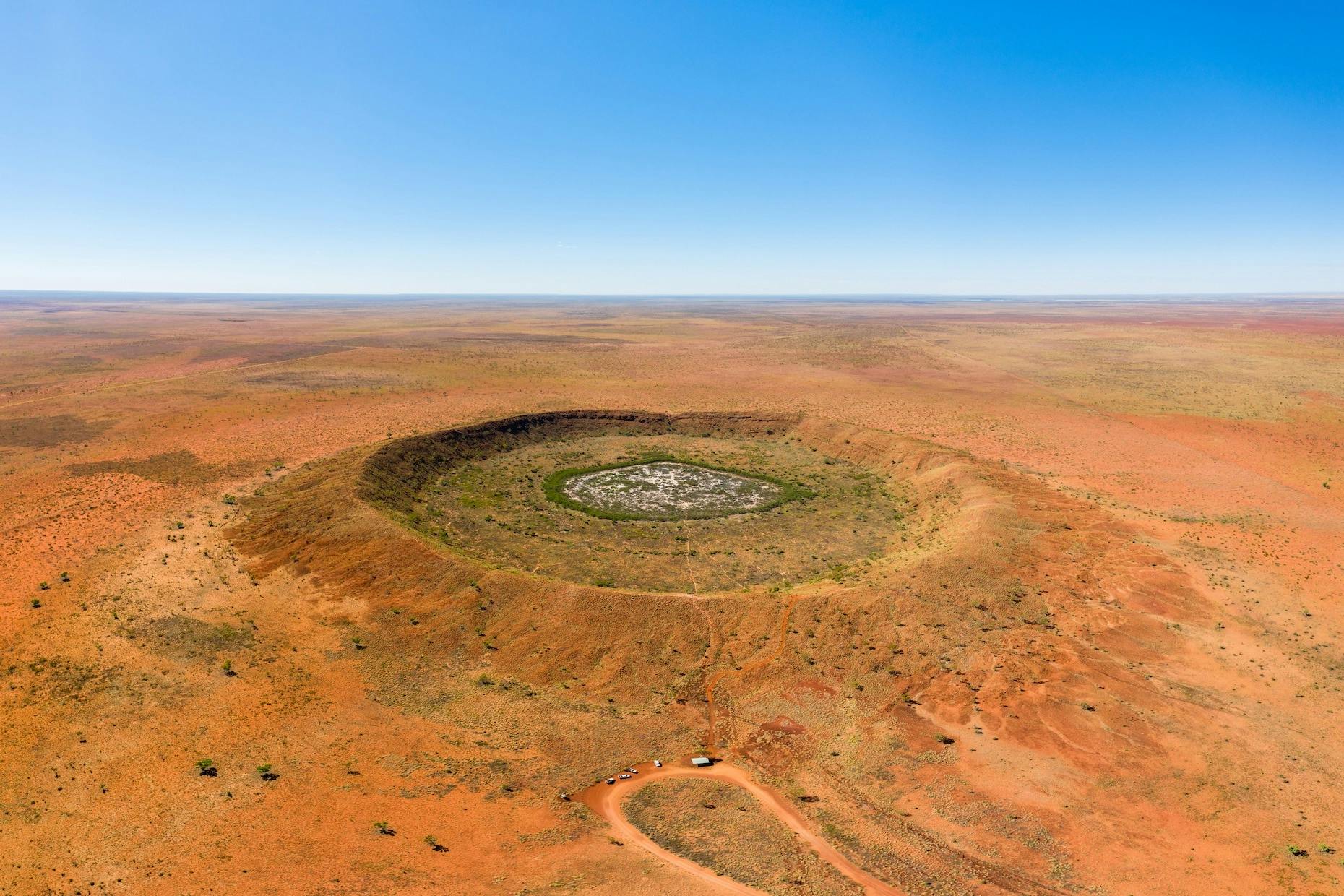Wolfe Creek Crater: Everything you need to know

Ok, we know what you’re thinking. “Wolfe Creek? I don’t want to get murdered!”
The site has got a bad rap since the 2005 horror film of almost the same name (the crater was actually named after Robert Wolfe, with an E, a gold rush prospector and storekeeper), but if you put aside any scaredy-cat inclinations you’ll be able to discover a truly remarkable geological wonder.
What is it?
The Wolfe Creek crater is the second largest meteorite crater – also known as an astrobleme – in the world. It’s hard to get a sense of scale just from photos, but this bad boy is big, and old. Up until 2019, it was believed that it was a whopping 300,000 years old, until new scientific dating techniques allowed for an amended estimation of 120,000 years. Which, to be fair, is still pretty darn old.
Spanning 880m in diameter, it’s posited that the crater was formed by a 15m wide iron meteor, the impact of which would have had 30 to 40 times the energy of the bomb dropped on Hiroshima. The crater is 60m deep at its deepest, with the outer ridge 35m above the surrounding desert. Unlike many other meteorite craters in the world, Wolfe Creek’s is remarkably well-preserved because of Australia’s geologically-stable desert, with low erosion rates perfect for keeping structures like craters intact.
The centre of the crater is much more green with vegetation because the gully collects water – although high evaporation means the area is highly saline.
While it was discovered by Europeans in 1947, Djaru people know the crater as kandimalal, with two main Dreaming stories to explain its presence. In one, it’s where the evening star fell to the earth after passing the crescent moon; in another, it’s the place where two rainbow serpent emerged from the earth, with one forming the Wolfe Creek and the other the Sturt Creek.
Where is it?
On Djaru country, the crater is on the edge of the Kimberley’s Great Sandy Desert. The site has been a Class A reserve since 1976; accessed via the Tanami Road, it’s approximately 150km south of Halls Creek – a 4WD is recommended as the road is notorious for corrugations.
As with much of the Kimberley, it’s recommended to visit during the dry season which runs from May to October – during the wet season, much of the park is inaccessible. Once you arrive, it’s about a 400m return walk to the top of the rim.
What to do?
First and foremost – bring water! There’s no drinking water available, including at the nearby campgrounds, and the nearest supplies are in Halls Creek, 4 hours’ drive away.
Wear sturdy footwear to keep steady on any rocky terrain, and make sure to wear sun protection – you are in the middle of the desert, after all! You can take in the impressive crater from the rim lookout, or walk around the entire crater’s rim: a 3.4km loop, you should allow approximately 2.5 hours. It’s recommended that you walk during the morning or afternoon when it’s cooler.
Subscribe to our free newsletter!
While you’re walking, you’ll probably see brown ringtail dragons, who can tolerate the high heat of the day. You may also hear the Major Mitchell cockatoos squawking as they nibble on the salt wattle seeds at the centre of the crater. When it’s cooler, you can also hope to spot red kangaroos, who can travel for days without water.
What not to do:
You can climb to the top of the rim, but access to the inside of the crater is not recommended due to the steep angle of the inner rim and danger of rock falls.
No fires are permitted within the park, as wood is scarce and essential for wildlife habitats.
As with all visits to our natural spaces, adhere to the Leave No Trace Principles: meaning don’t leave any rubbish out there, don’t bother any wildlife, don’t pick wildflowers and try your best to look after the surrounding area. Make sure you also adhere to any fire restrictions or bans that might be in place. And don’t take any meteorite fragments!
Header image: Shutterstock